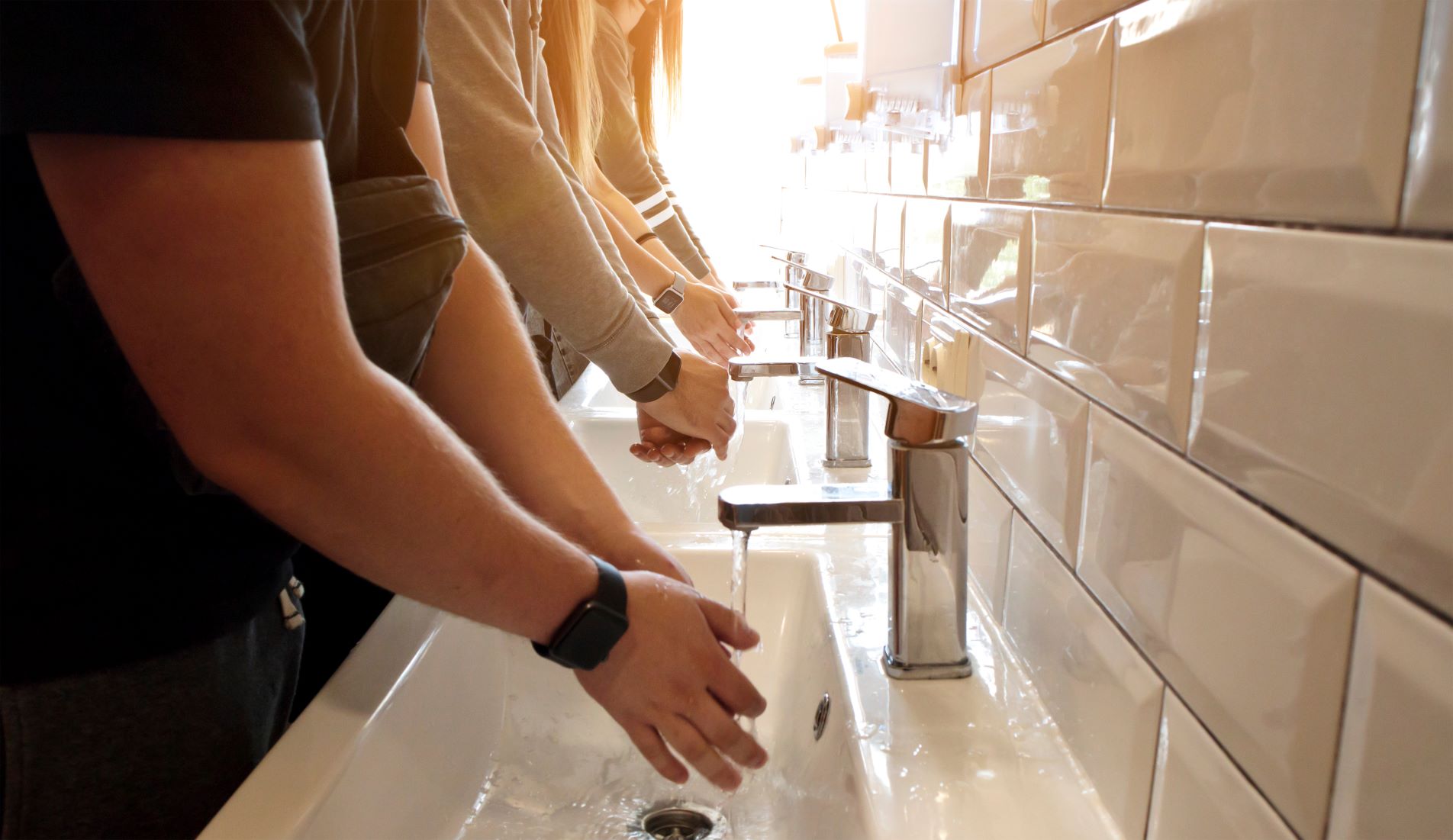There has previously been much debate surrounding the financial, hygiene, sustainability and environmental implications of hand dryers vs paper towels, with energy-efficient, eco-friendly hand dryers proven to save on running costs, improve cleanliness and reduce contaminated waste sent to landfill. The debate has seemingly now turned to which type of hand dryer – warm air or cold air – will bring optimal results with regards to energy efficiency, drying efficacy, cost and carbon footprint considerations.
Since the earliest model was patented in 1922, hand dryers have traditionally used warm air to dry the user’s hands. Activated by a push button, the dryer would emit a noisy blast of warm air, generated by an internal rotating motor and utilising a coiled heater element to rapidly heat up the airflow as it passed through the unit, before being blown out through a wide nozzle. The pressurised warm air essentially dried the user’s hands by evaporating the water away. Thanks to ongoing innovation, today’s dryers are a far cry from their loud and often inefficient predecessors. Modern hand dryers utilise infrared technology and motion detectors for a more hygienic and touch-free experience, automatically turning on and off when hands are placed underneath.
As we move forward with technology, our engineers are now looking to expand how cold air can play an important role in significantly reducing the amount of energy used when drying hands, without having to compromise on drying speed.
Whilst warm air hand dryers undoubtedly have an element of user comfort to them, they often require a higher rated power and heating elements to achieve a consistent warm air hand dry. Cold air technology on the other hand works without the heated element, focusing on airflow speed and the aerodynamics of the funnel to create a faster and more energy efficient hand drying experience for the end user. Using a high revolution motor similar to a vacuum, and generating its own heat, a cold air dryer is able to produce a significantly greater air speed, with that air flow forced through a much narrower nozzle than traditional models. The blade of pressurised air literally scrapes water droplets from the hands, drastically lowering energy consumption and reducing drying time to around 12 seconds.
Cold air dryers are typically more energy efficient, and therefore cheaper to run, typically using up to 80% less energy than their warm air counterparts. These models still used a motor and a fan but, rather than using energy by rapidly heating the air as it’s generated, a cool air hand dryer generates a modest amount of heat by pressurising the air through an aerodynamic funnel that carries the airflow to the user. Air velocity is a key element here, as these models don’t use heat to aid evaporation, but rather careful engineering and mechanics to balance user comfort with efficiency and drying time.
Drying times are always a huge factor in hand dryer development. Airdri’s latest hand dryer, the PowerDRI, dries hands in less than 12 seconds, the time when the user starts to become impatient with the drying process, uses less power as well as being eco-friendly – operating at sub 1 kilowatt – and all whilst keeping under the all-important 80-decibel noise output mark.
We’re putting a lot of research and development into the different types of motors used in hand dryers, from reducing the noise that the motors themselves make, to improving the efficiency of the blast of air that dries your hands, to ways to pressurise different chambers inside the hand dryer unit in order to result in an effective laminar flow of air.
A motor generally has a column of air in a cylinder but, as demand is high right now for a blade type aperture on the dryer, we’ve looked at the most efficient way to minimise the friction inside the chamber, taking the air from a cylindrical shape to a thin and even blade shape as it is dispersed. We’re moving away from having a heater in the dryer, with the associated safety restrictions and inefficient wastage implications, and towards using pressurised chambers within the units that create their own heat, somewhere between 15 and 20 degrees Celsius. The advantages with this are a warm air effect that creates a pleasant experience for the user combined with a faster drying time that uses a less forceful blast of air and is more energy efficient.
Ultimately, the choice between warm or cold air hand dryers rests with the customer. In colder climates, specific types of venues, or based on personal preference, a warm air hand dryer is often desirable. Our ComfortDRI provides a warm air dry while using a reasonable power rating of 1.7kW, which is more efficient than older models that use over 2kW. For those seeking a cooler air dryer with maximum energy efficiency, the Airdri PowerDRI and CompactDRI are ideal options.

The Airdri ComfortDRI, CompactDRI and PowerDRI hand dryers.



Comments are closed here.